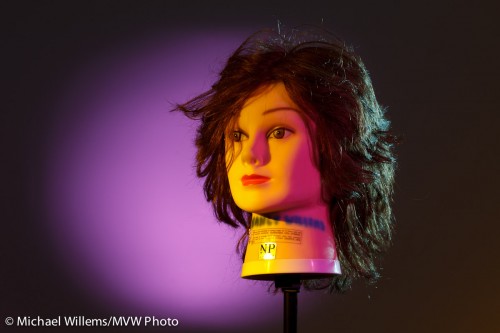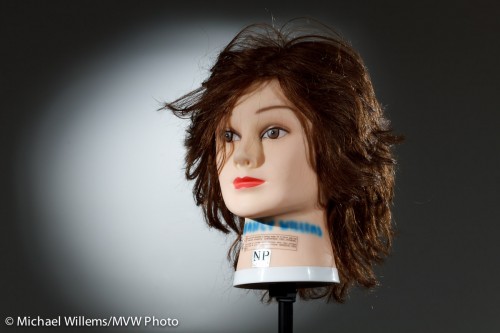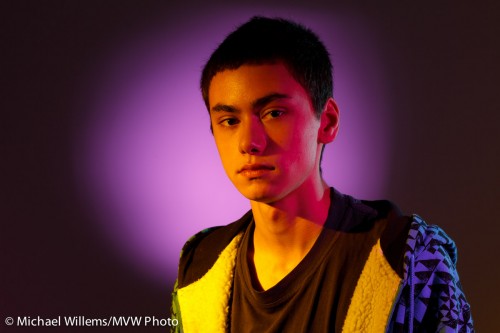Right?
Um, no, of course not: colour is a tool for you to use in your artistic endeavors.
And colour can be anything you like.
A few nights ago, I though I would see how long it would take me to recreate a lighting setup that my friend Dave Honl (yes, he of the excellent Honl Photo modifiers) did recently. So I looked at his shot and put it together the same way he shot it, in exactly 20 minutes:
That is including:
- Setting up four light stands.
- Connecting four flashes (3x 430EX, 1x 580EX) to Pocketwizards using Flashzebra cables.
- Mounting these on the light stands using ball heads etc.
- Equipping the key light with a 1/4″ grid and an Egg Yolk Yellow gel.
- Equipping the fill light with a 1/4″ grid and a Follies Pink gel.
- Equipping the hair light with a small snoot and a Steel Green gel.
- Equipping the background light with a long snoot and a Rose Purple gel.
- Setting the power levels correctly (by trial and error, combined with histogram: key light = 1/4 power, fill=1/8, hair=1/8, background=1/16).
- Setting the camera up correctly (I used the 7D and set it to manual, 100ISO, 1/125th, f/6.3).
Huh? Egg Yolk Yellow, a crazy bright colour, to light the face? Are we crazy?
No, just having fun. Yes, of course Dave could have made his shot using no colour. Here’s what the same shot looks like without the gels. (Of course I switched the camera to an aperture one stop tighter, namely f/9, to compensate for the extra light once I removed the gels):
Yeah, nice, and appropriate for a corporate head shot. But compared to the previous, it is kinda boring, no? So next time you shoot someone, unless they are a law firm executive, you might have fun and try some colour. You don’t need to go crazy and use four colours, but a splash here and there can really help your picture come alive.
By the way, what was the colour of the backdrop?
White.
Remember the following equation:
White – light = black
Similarly, in practice, black + enough light = white.
And finally, a real person: my son Daniel (“sigh, not again, Dad”):
But here’s the thing. After seeing it, he grinned and said “Rad.”. That‘s a first!





